Did delayed wig fitting save Swansea parishioners in 1739?
- Published
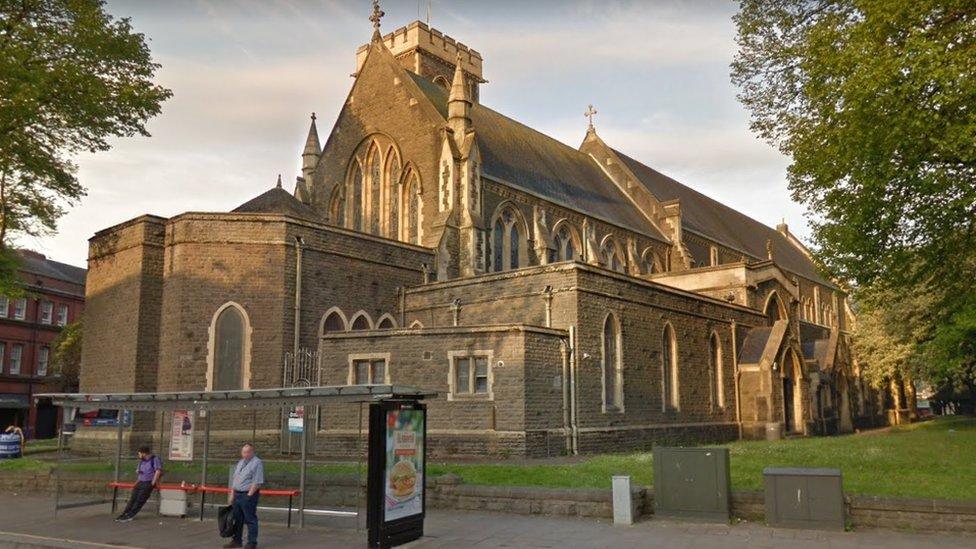
St Mary's Church still stands in Swansea city centre today
It was 280 years ago that the roof of Swansea's largest church, St Mary's, collapsed 10 minutes after the Sunday morning service should have begun.
Only one person was hurt as the vicar had been delayed opening the church.
Many lives were saved because Rev Charles Davies' "drunken barber" failed to turn up to fit his wig, according to legend.
Historian Gerald Gabb has looked into the story in his book, Swansea & its History, II: The Riverside Town.
It is said the congregation was saved as they were standing in the churchyard when the aisle pillars failed and the nave roof caved in.
Mr Gabb said: "What is reported in a number of sources is that the roof gave way after the service should have begun and that there were so few injuries because - for whatever reason - there was some sort of delay.
"However, the 'Gentleman's Magazine', external records that on the previous night, 19 May 1739, there had been high winds and thunder across south Wales and hail in Abergavenny 'measuring three, four and five inches'.
"Given that it was already known that the church was in a poor state of repair, it's possible that the service had been deliberately delayed in order to assess the effect of the previous night's storm."
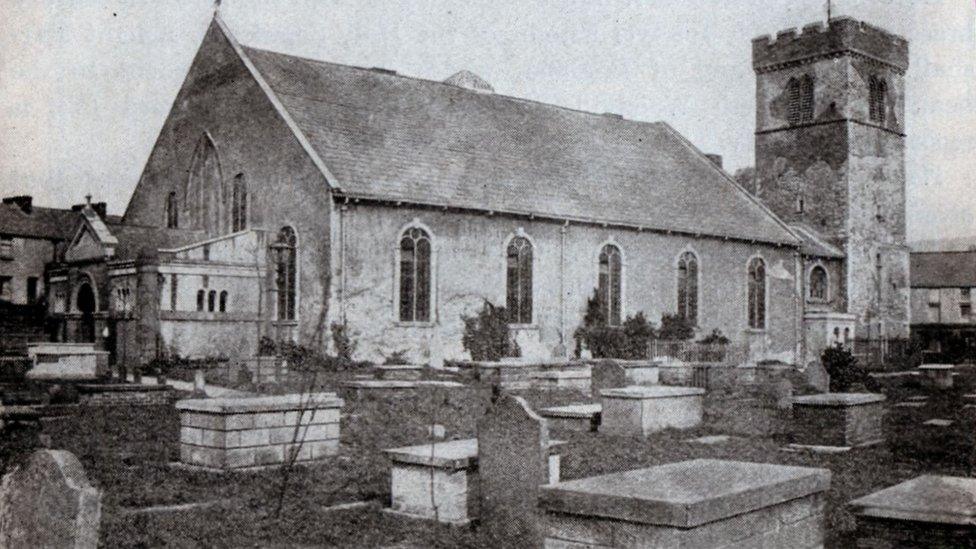
The church - pictured here in 1895
The legend of the drunken barber has been part of Swansea folklore for centuries.
In what is considered the definitive history of St Mary's, Kenneth Padley's book Our Ladye Church of Swanesey, a History of St Mary's, he attributed the earliest known account of the tale to Evan Davies, a sexton with responsibility for church maintenance, 100 years later.
Mr Gabb believes people should not necessarily dismiss it out of hand: "We're dealing with a time of primarily oral history and very few written sources.
"Newspapers and magazines were in their infancy and the church records tend to deal in quantitative information such as the damage and the cost of repairs.
"So the absence of contemporary written accounts doesn't automatically mean the drunken barber story isn't true."
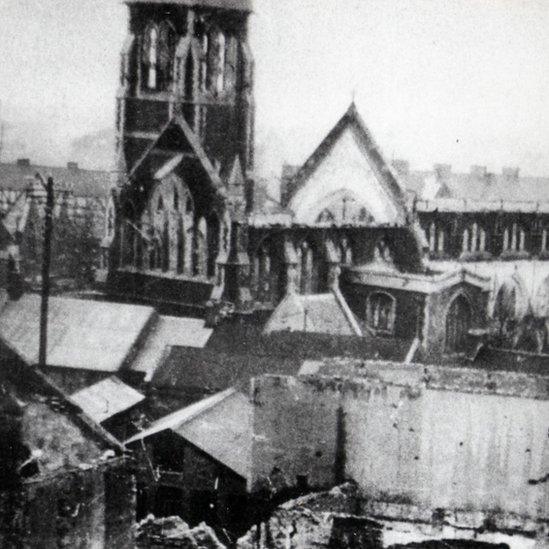
The church was heavily damaged during World War Two
Indeed, the sexton link may be significant, suggested Mr Gabb, as one of the theories for the collapse was that Evan Davies's predecessors had dug graves so close to the church's walls they undermined the foundations.
So had he - a century later - been trying to deflect attention in defence of his profession?
Despite little having changed since Norman times, the 1739 collapse precipitated 200 years of upheaval for St Mary's.
In the 1690s, one observer, Isaac Hamon, called the church "very fair and large", but by then Swansea had twice allocated a rate of £60 "towards the reparation of the steeple and church", in 1661 and again in 1677.
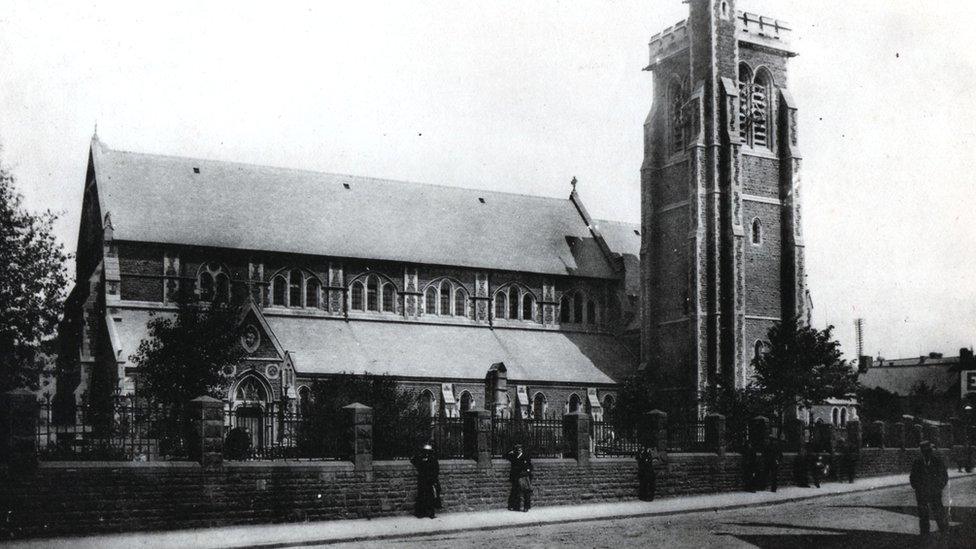
This is how the church looked in 1900, prior to being rebuilt after the war
Further work was carried out in 1704, but it appears to have been little more than sticking plasters as St Mary's was again in trouble prior to the 1739 collapse.
The reconstruction was highly unpopular with the congregation as the Gothic arches were replaced with "uglier" horizontal Roman arches, and St Mary's was twice rebuilt during the 19th Century in order to improve its appearance and bolster its attempts to be designated a cathedral.
All but the foundations were destroyed in the Three Nights Blitz of February 1941, and the church as it is known today was faithfully reconstructed during the 1950s, to represent how it would have looked in 1900.
But what of the wig?
Mr Gabb concludes we'll probably never know whether it was the barber's boozy Saturday night which saved so many lives.
"The most thorough study of the incident is by W.H. Jones, who harks back to the roof of the south aisle having been previously blown off in 1704, with 100 and 200lb stones landing 400 yards away.
"He also notes that the church records show repairs were already under way at the time of the 1739 collapse, so given this it would seem likely that the congregation would have exercised caution after a storm, with or without the barber's non-appearance.
"However, there are some very specific details of the story, such as the wig which would have been fashionable at the time, which perhaps support it.
"Either way it's part of Swansea history now, and true or not it's here to stay."
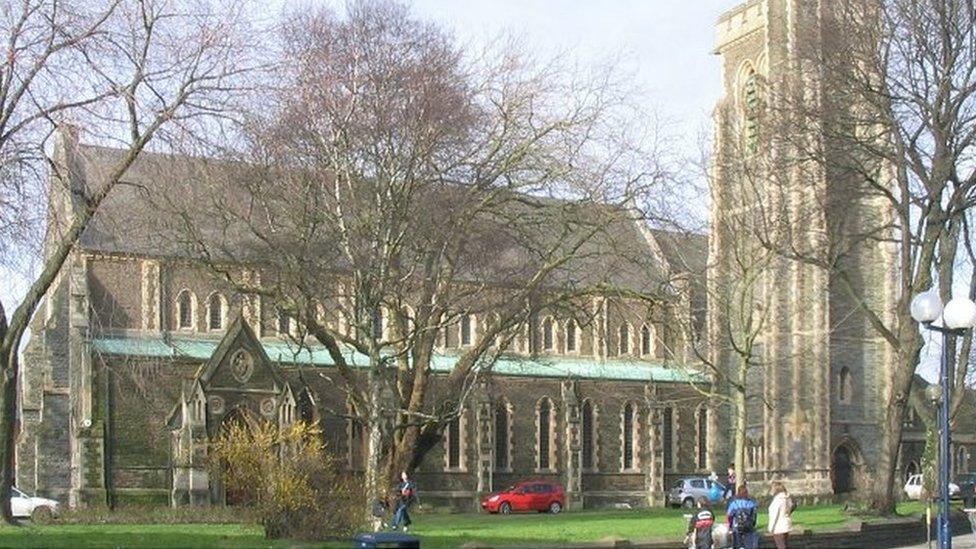
2007: Today the church is surrounded by more established trees
- Published10 August 2018

- Published4 July 2019
